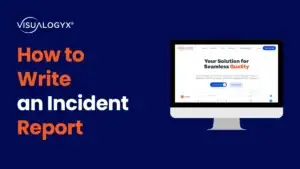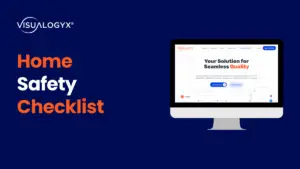Understanding Insurance Fraud
Insurance fraud comes in various forms, but it can generally be categorized into two main types:
- Hard Fraud: This type of fraud involves deliberate attempts by individuals or groups to stage accidents, injuries, thefts, or property damage with the intention of making fraudulent claims. In a typical example of hard insurance fraud, a group of individuals conspires to stage a car accident. They carefully plan the accident, ensuring that it appears legitimate. After the accident, they report injuries and vehicle damage to their insurance companies, seeking substantial payouts. However, in reality, the accident was premeditated, and the injuries are often exaggerated or entirely fabricated. Such cases involve deliberate criminal intent to defraud the insurance company.
- Soft Fraud: Soft fraud, on the other hand, typically involves policyholders exaggerating the extent of their legitimate claims. In a soft insurance fraud scenario, a homeowner experiences a genuine burglary in their house. They have a valid home insurance policy that covers theft and property damage. While some items were stolen during the burglary, the homeowner decides to inflate the claim by including items that were never in their possession. They might also exaggerate the value of the stolen items to receive a higher payout from the insurance company. This type of fraud doesn’t involve a staged event but rather an attempt to maximize the insurance payout dishonestly.
Consequences for Insurance Companies and Policyholders
The consequences of insurance fraud are far-reaching and affect both insurance companies and policyholders.
For Insurance Companies:
- Financial Loss: Fraudulent claims result in substantial financial losses for insurance companies. These losses encompass the payout for the fraudulent claim, investigation costs, and legal fees.
- Increased Premiums: To offset their losses, insurance companies often raise premiums, passing the financial burden of fraud prevention onto policyholders.
- Resource Drain: Detecting and investigating fraud consumes significant resources, diverting them from serving genuine policyholders.
- Damaged Reputation: A high incidence of fraud can damage an insurance company’s reputation and erode trust with customers.
For Policyholders:
- Higher Premiums: As insurance companies raise premiums to cover their losses from fraud, policyholders end up paying more for their insurance.
- Delayed Claims: Due to increased scrutiny, legitimate claims can sometimes be delayed as insurance companies thoroughly assess their validity.
- Compromised Trust: A rise in fraudulent claims can create a general atmosphere of distrust, making it harder for genuine policyholders to navigate the claims process.
The Growing Threat of Fake Media
The digital transformation in the insurance industry has paved the way for self-service options, enabling customers to capture and submit digital evidence seamlessly. While this shift has ushered in increased efficiency and improved customer experiences, it also presents a pressing concern—the proliferation of fake media.
In today’s tech-savvy world, it’s no secret that manipulating digital content has become increasingly accessible. This means that even the least tech-savvy individuals can use readily available tools to edit, alter, or create digital media that may not reflect the actual reality. The implications of this extend to the insurance industry, where billions of dollars are already lost to fraud annually. As the demand for self-service options continues to rise, it’s essential to be proactive in addressing the vulnerability of accepting digital media directly from insured customers or external parties.
Consider the myriad ways in which fraudulent, inaccurate, or missing media can infiltrate insurance transactions:
- Misleading Location: Photos of property damage might be taken at a different location, misrepresenting the extent of the damage.
- Stock Photos: Internet-sourced stock photos may be used to deceive underwriting or claims processes.
- Digital Manipulation: Photos of photos or screen captures can be edited to create deceptive evidence.
- Exaggerated Damage: Photos and videos of damage may be altered to magnify the extent of the damage.
- Incomplete Repairs: Altered photos and videos may depict repair work that was either improperly completed or not completed at all.
- Undocumented Pre-Existing Damage: Pre-existing damage to an insured asset may be excluded from records.
Each of these scenarios underscores the need for vigilance in safeguarding the veracity of digital evidence in insurance transactions.
Mitigating the Threat of Fake Media in Insurance
Given the rising threat of fraudulent media in insurance, a proactive approach to mitigation is essential. Here are some steps that insurance and IT leaders can take to mitigate the risk of fake media:
- Acknowledge the Threat: The first step is to acknowledge the seriousness of the threat posed by fake media. The risk is not only real but is also poised to worsen, given the increasing accessibility of technology for generating fake content and the growing reliance on self-service options within the insurance ecosystem.
- Implement Media Verification Measures: Insurance companies can deploy advanced media verification tools that scrutinize digital evidence for signs of tampering or inaccuracy. These tools utilize algorithms to detect anomalies and irregularities within images and videos.
- Track and Record Media Changes: It’s crucial to implement measures that track any alterations made to digital media during the claims process. Recording the changes can help identify potential fraud and facilitate more robust investigations.
- Educate and Train Staff: Insurers should provide training and education to their staff to recognize signs of fake media. This empowers employees to be more vigilant when assessing digital evidence.
- Leverage Third-Party Verification: Third-party experts can be brought in to validate digital media, ensuring its authenticity. This independent verification can add a layer of trust to the claims process.
Fraud Detection in Insurance with Visualogyx Technology
Visualogyx stands out in the realm of inspection management and audit software with its robust data verification capabilities, aiding financial institutions in fraud prevention through detailed inspections and evidence data verification.
Its feature, KYPiT, an AI layer integrated into Visualogyx, enhances data accuracy and helps identify potential fraud. Insurance providers can utilize Visualogyx for swift, real-time inspections, sending requests based on specific forms or templates to gather relevant information and media. This facilitates quick completion and verification of data and images, verifying their authenticity. KYPiT further strengthens fraud prevention in insurance, offering reliable data authentication and conducting integrity checks of applicants’ web presence to detect fraud indicators.
Visualogyx has the potential to reduce fraudulent claims in the insurance industry, potentially lowering operational costs and offering more affordable premiums.
Conclusion
Preventing insurance fraud is not just a matter of saving money for insurance companies; it’s about maintaining the integrity and trustworthiness of the insurance industry as a whole. The financial burden caused by fraud affects both policyholders and insurance providers. By utilizing advanced technologies like Visualogyx the insurance industry can take proactive measures to prevent and detect fraud.








